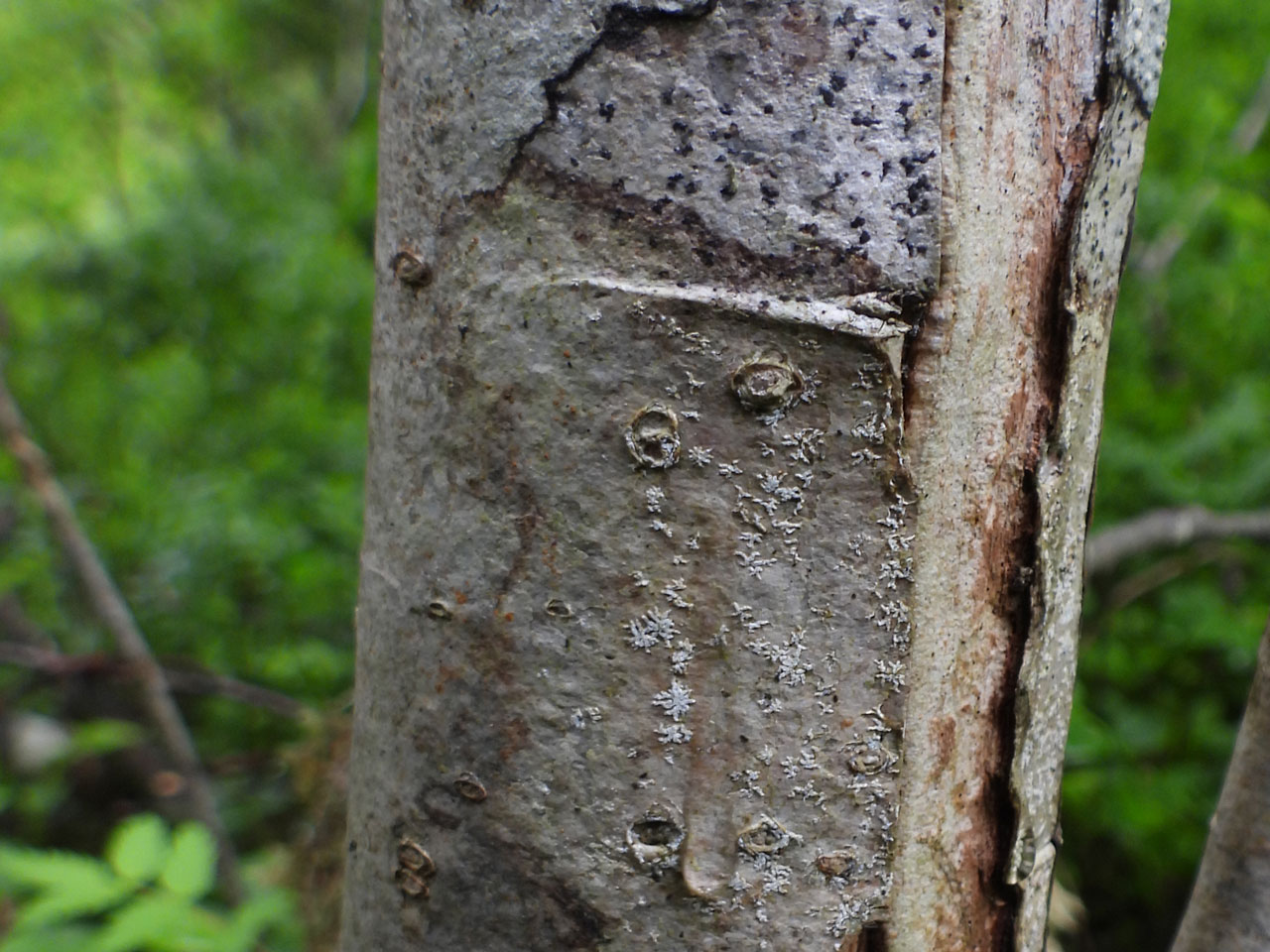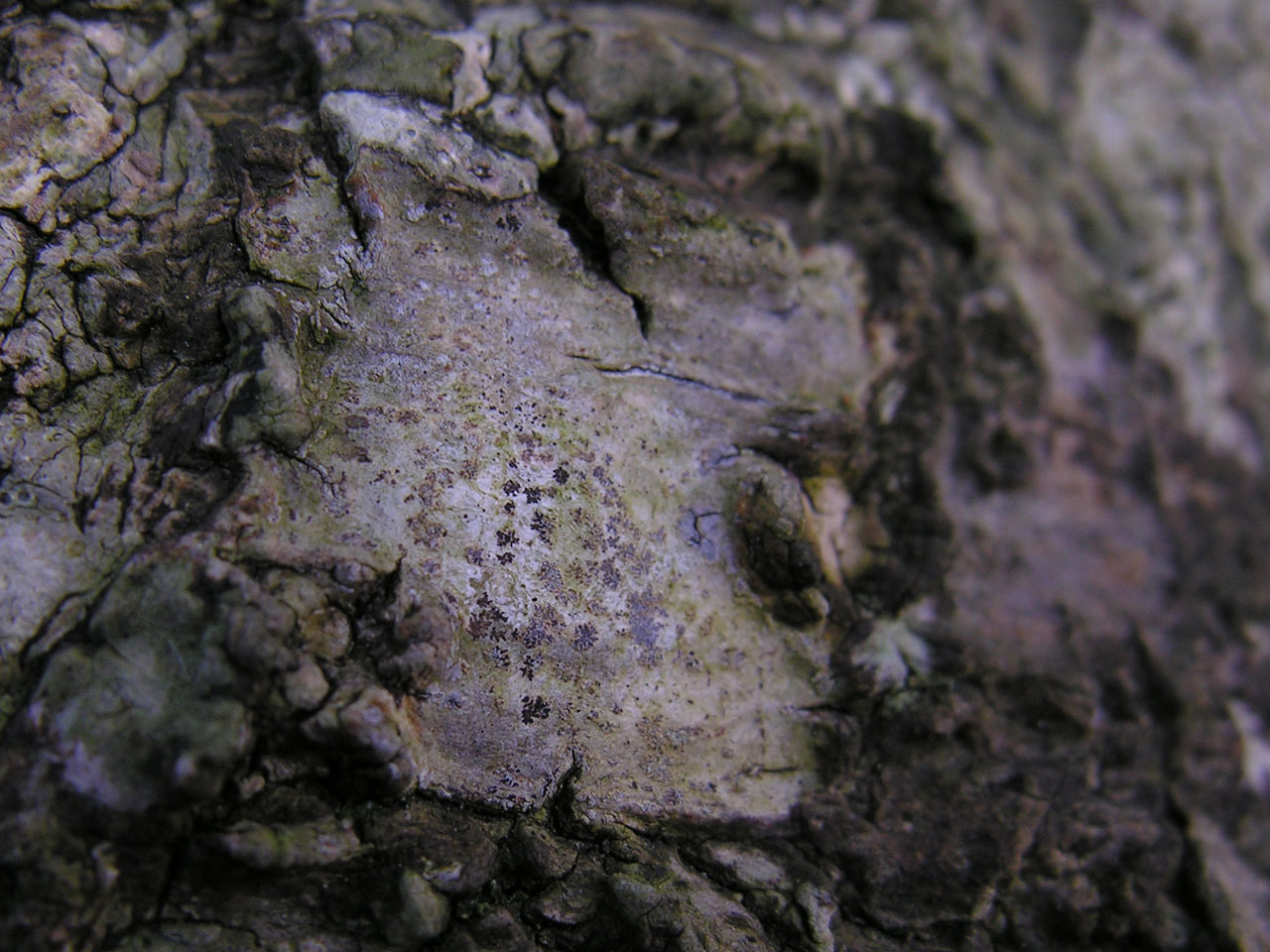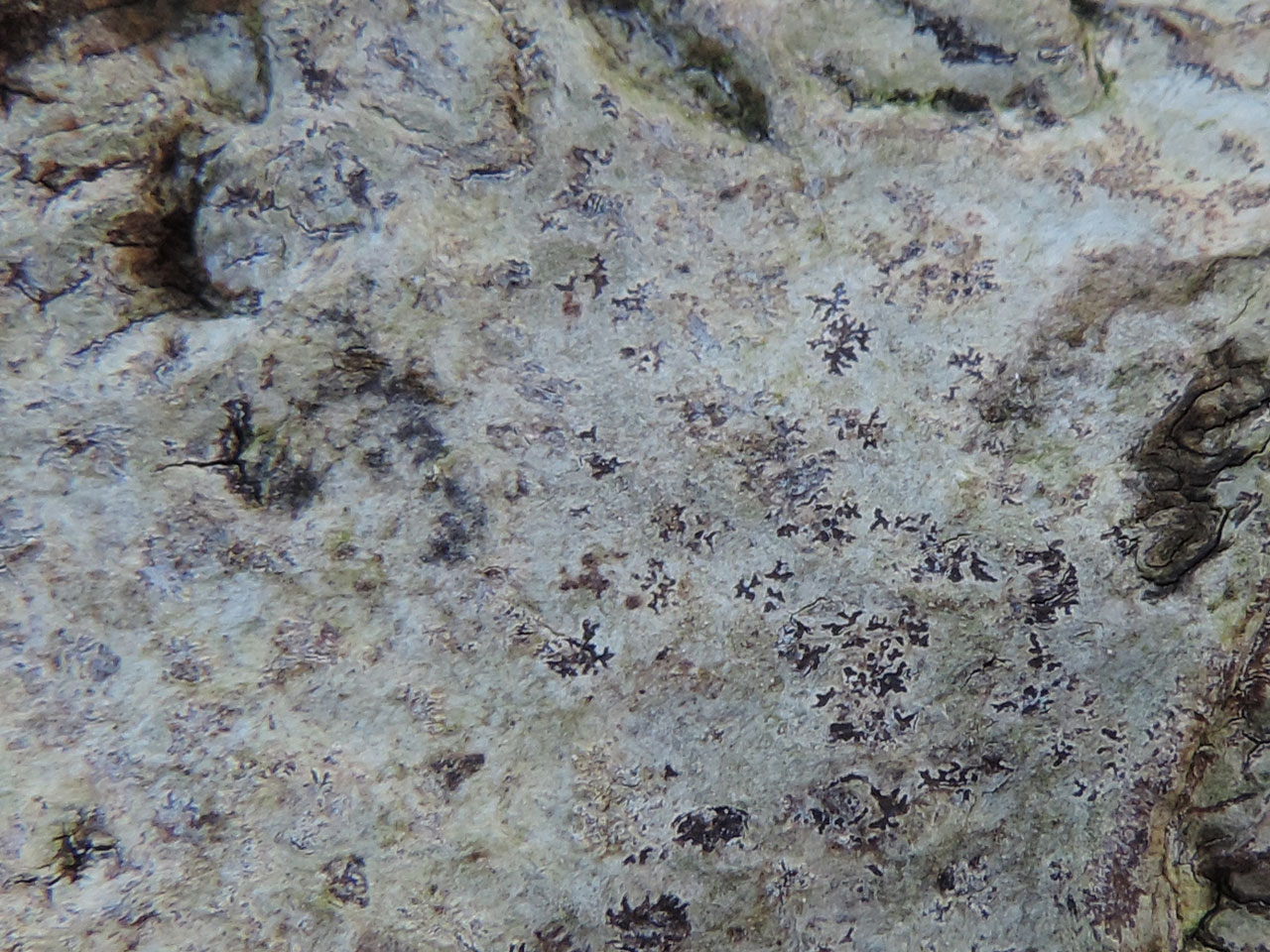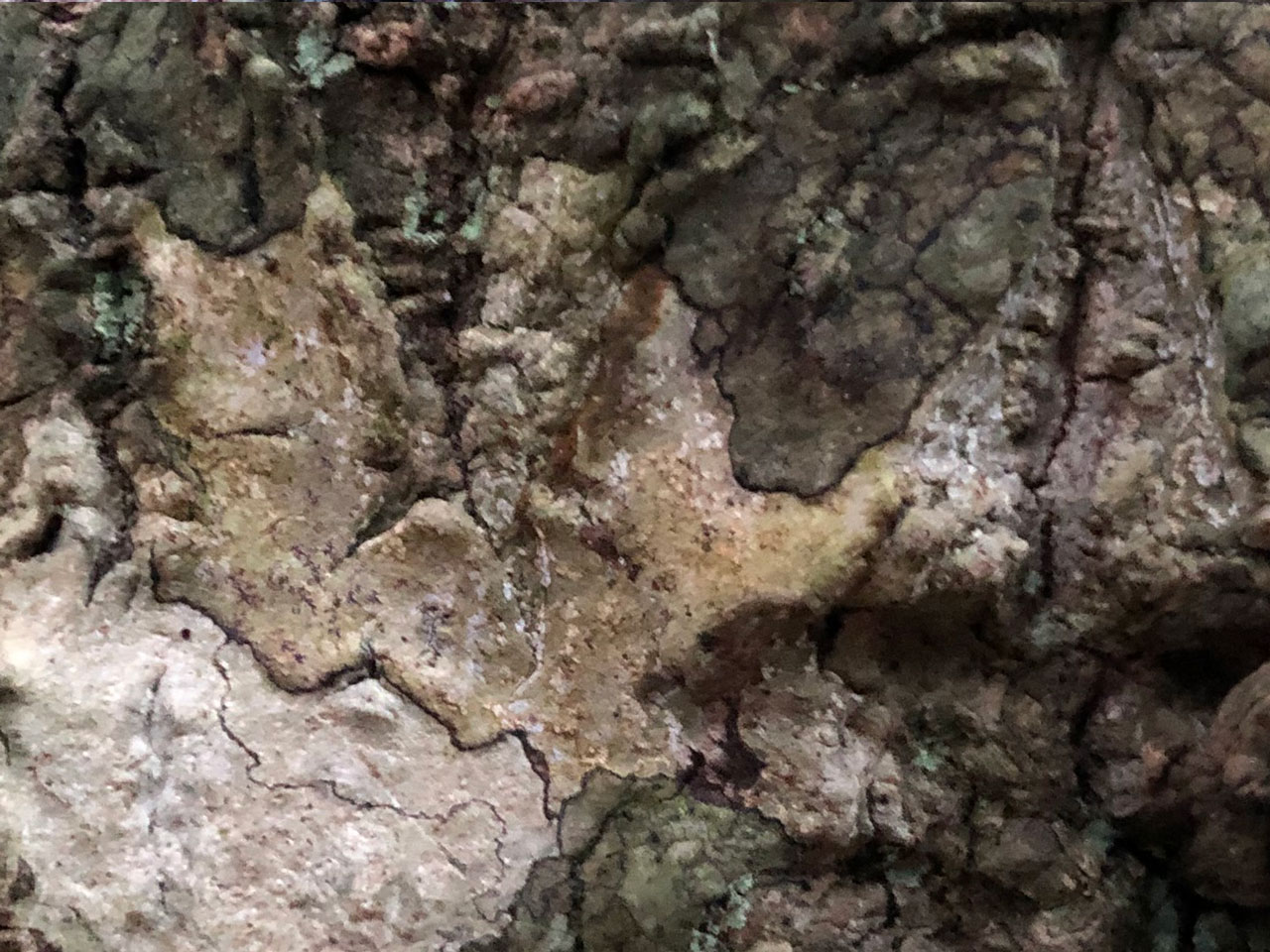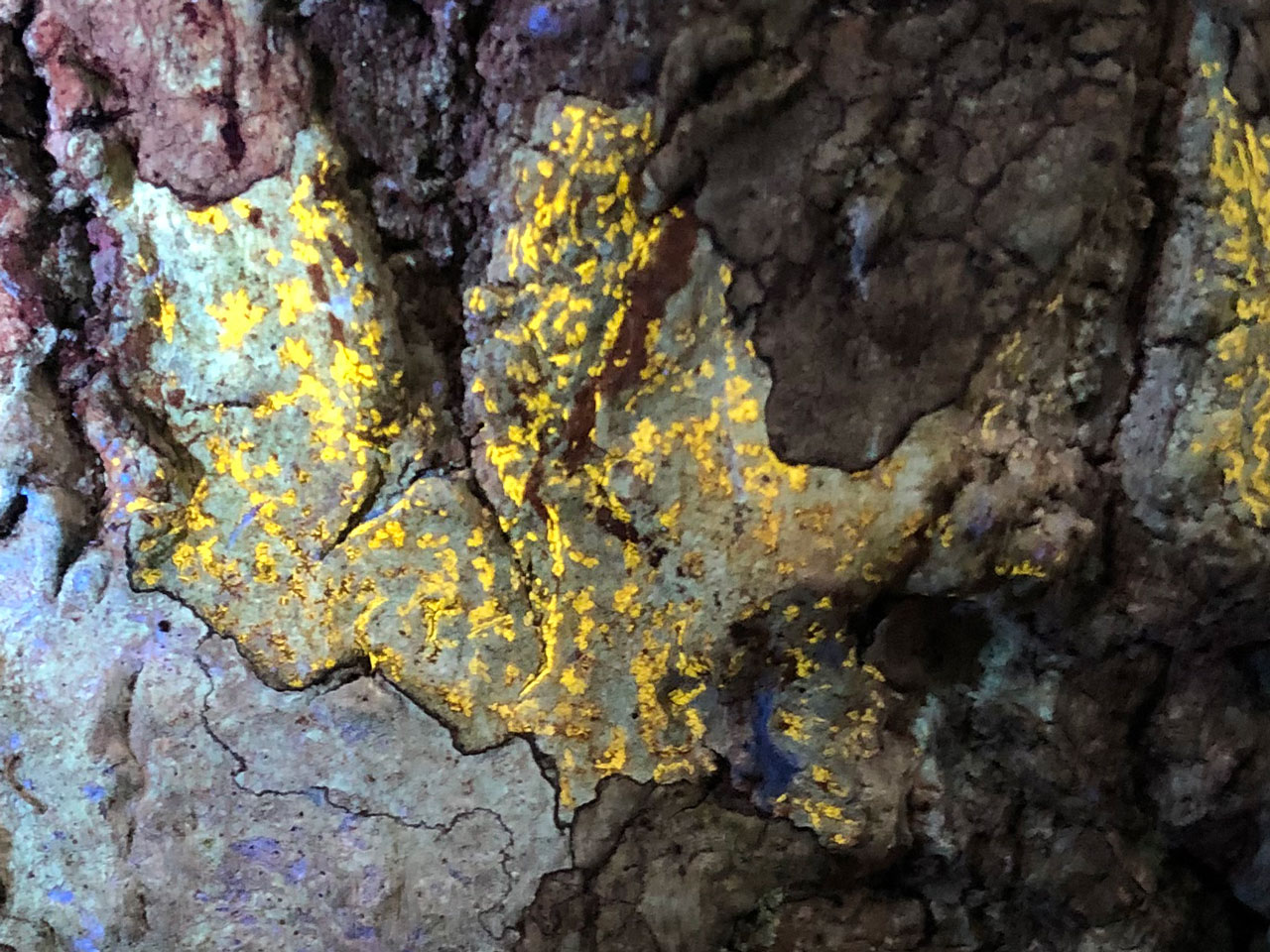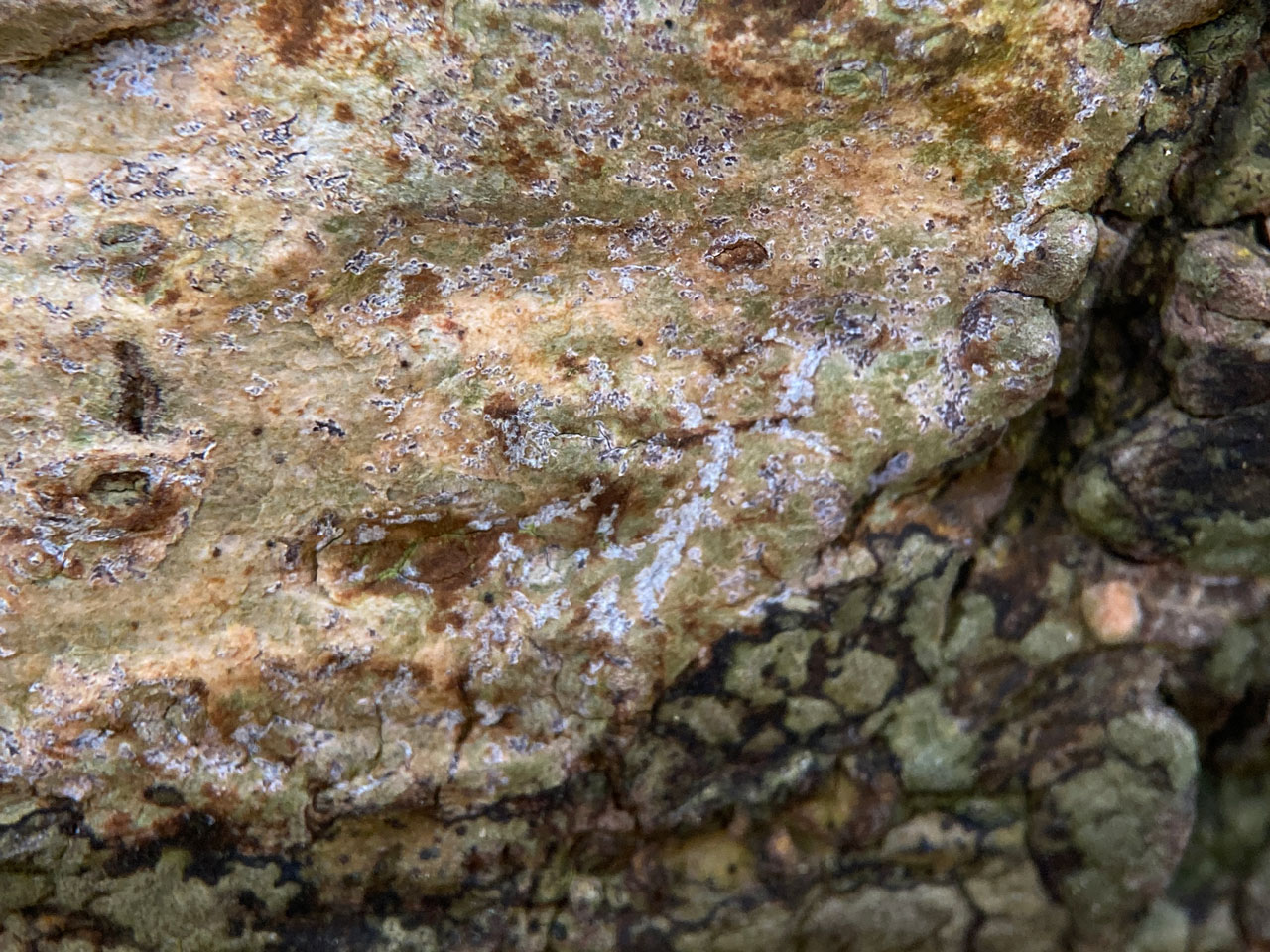Synarthonia astroidestera
Something of shadowy lichen, which can be difficult to spot at first, with its stellate apothecia covered white pruina blending into the pale thallus, but which can be startlingly revealed by UV light, when the pruina shine out very bright orange. A occasional to rare southern oceanic species of smooth bark on veteran or slow growing trees, typically old Hollies, but not infrequently on other tree species. Mainly in old growth woodlands and reasonably light demanding. The UV flourescence of the white pruina sperates this lichen from all similar species found in these islands.
Thallus immersed, usually delimited by a brown line, cream-white to cream-yellow. Apothecia linear (to 1.2 mm long), irregularly branched or stellate (to 1.2 mm diam.) with rays 0.06–0.2 mm broad, pale to dark brown but usually thickly white-pruinose and in dried collections often developing a waxy bloom of minute needle-shaped crystals (×50 lens); in section 45–85 μm tall; epithecium colourless to red-brown (K+ pale green), often with dense minute granular crystals dissolving in K; hymenium 35–50 μm tall, colourless; hypothecium indistinct or to 25 μm tall, colourless; paraphysoids 1 (–1.5) μm diam., numerous, sometimes pigmented in the epithecium and 1.5–2.5 μm diam., sometimes with apical caps. Ascospores (17–) 18–24 (–27) × 6–7 μm, (3–) 4-septate, cylindric-obovoid, the apical cell enlarged; old spores brown and warted. Pycnidia not seen. Thallus C–, K–, KC–, Pd–, UV+ orange; pruinose apothecia UV+ bright orange-yellow (lichexanthone).
Distinguished from Arthonia anglica and A. stellaris by the UV+ orange apothecial pruina, and chemistry (TLC). With UV light even small amounts of pruina can be detected, allowing even poor material to be found.
On smooth bark, especially Holly, but not infrequently on other trees including Beech, Rowan and Oak, in ancient woodlands on veteran or suppressed slow growthing trees. In reasonably well lit, sheltered and humid locations.

A occasional to rare southern oceanic species. S.W. England (locally frequent, S. Hampshire, New Forest to Cornwall), very rare Wales, very locally frequent western Ireland.
Dependant on veteran or slow growing trees mainly in old growth woodlands and reasonably light demanding, although not as strongly as Arthonia anglica. Threatened by increasing shade in many formerly grazed woodlands in the south west and Wales.
Britain: Near Threatened, International Responsibility Species
Wales: Near Threatened
Cannon, P., Ertz, D., Frisch, A., Aptroot, A., Chambers, S., Coppins, B. J., Sanderson, N. A., Simkin, J. & Wolseley, P. (2020) Arthoniales: Arthoniaceae, including the genera Arthonia, Arthothelium, Briancoppinsia,Bryostigma, Coniocarpon, Diarthonis, Inoderma, Naevia, Pachnolepia, Reichlingia, Snippocia, Sporodophoron, Synarthonia and Tylophoron. Revisions of British and Irish Lichens 1: 1 - 48
Sanderson, N. A. (2021) Porina effilata and Arthonia anglica Clovelly to Peppercombe, North Devon and Arthonia anglica in the New Forest, Hampshire. A report by Botanical Survey & Assessment to Natural England.
Text by Neil A Sanderson, based on Cannon et al (2020)
